Unless your FETs are IR DirectFETs (with metal tops) then what you propose amounts to sticking the plastic top of the FET onto the heatsink... and a thick plastic package has quite high thermal resistance.
It's better than nothing, but, well...
The way this is usually done is:
- Put your FETs on component side
- Put plenty of vias from the FET's back side (which conducts heat well) to transport heat to the back of the PCB
- Make sure you have wide copper pours
- Squeeze some Silicone Gap Filler material between the back of the PCB and a metal enclosure, heatsink, etc.
However if you got thru-hole parts with pins sticking through the board, and you don't want them to poke into the heatsink, then your gap filler is gonna be thick (unless the heat sink only covers a small part of the board) and these materials, while much better than air or plastic, still have abysmal thermal resistance compared to metal...
Also you'll need to clamp the board with an aluminium profile or something. Trying to squeeze your thermal interface material using just four screws in the corners of the board would bend it and crack your ceramic caps.
If you have airflow on top layer, you can also use some SMD heat sinks.
You won't get thermal characteristics on par with a TO220 onto a heatsink, but depending on your dissipation, it could work.
Optimize heat sink design - connect cooling pad on PCB backside by vias

Heatsinks at the back:
http://www.pcstats.com/articleimages/200702/Gigabyte965PDq6_m9.jpg
http://www.eevblog.com/forum/blog/eevblog-744-smd-thermal-case-design-supply-part-15/25/
